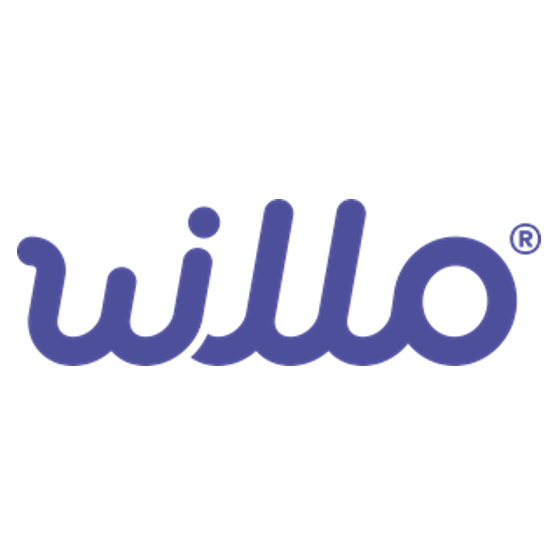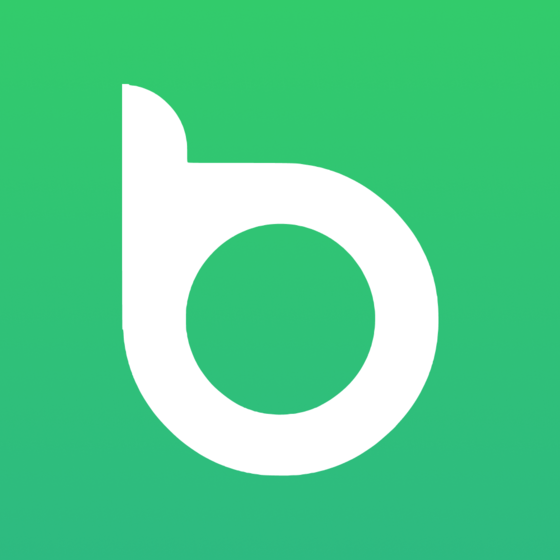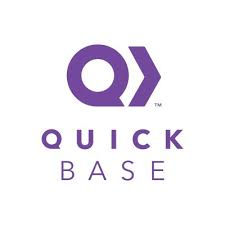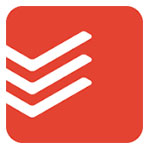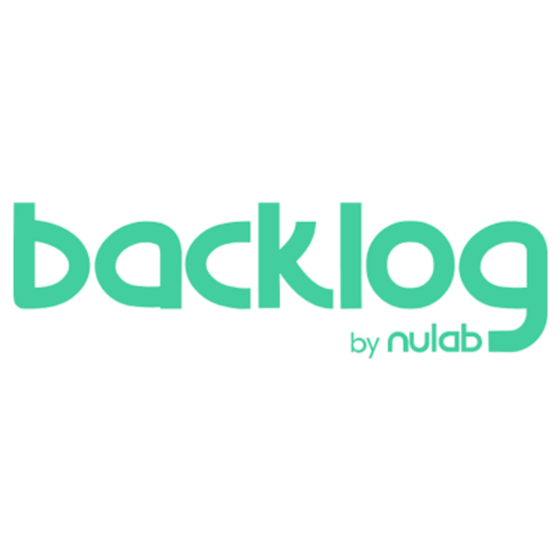15 Best Task Management Software List
Here's my pick of the 15 best software from the 35 tools reviewed.
Talk through what you’re looking for. Get a custom shortlist based on your needs. No fees.
The Reclaim 2022 Task Management Productivity Trends Report defends the use of task management software, noting up to a 41% increase in productivity when the question "What to do next?" is already answered by your to-do list tool of choice.
Of course, if you aren’t a fan of high-tech solutions, you can always use a simple task management approach. You can rely on generic programs with note-taking and organization functions like Google Sheets, Google Docs, Microsoft Word, and Microsoft Excel. These require more manual input from the user, though.
Sophisticated task tracking tools can help you go beyond a simple to-do list. The best task planner apps will help you stay organized, provide micro and macro points of view of your workflow, identify delays and problem areas, and keep everyone on the same page.
This article will help you quickly compare and evaluate the 15 best task management software on the market today.
If you have questions about task management software, go to our FAQ at the bottom of the page. Or, you can jump right to the best task management software overviews if you're ready to start comparing.
How I Selected the Best Task Management Software
If you're wondering how I selected the best task management software, here's where I'll break it all down for you. First of all, I started with task management software that have high user review and satisfaction ratings. Then, using my experience in digital project management, I discerned what key criteria were most important for task management software and compared how each of them stacked up against the rest.
After careful consideration, I've determined that these are the most important criteria when selecting the best task management software.
User Interface
When it comes to task management software reviews, user interface (UI) and user experience (UX) play a major role in my decision-making process. A great UI should be intuitive and easy to use; not only does this create better customer experiences, but it can also drastically reduce onboarding and training costs for businesses. Additionally, UX design helps users navigate websites and apps quickly and accurately by using effective visual cues, making it easier for users to access information they need in order to do their jobs efficiently.
Usability
Usability is an important factor to consider when selecting task management software. It refers to how intuitive and user-friendly a software is and can be the deciding factor in whether or not it’s suitable for your needs. Task management software has become increasingly sophisticated over the years and some programs are more complex than others. It’s important to ensure that your choice of software is easy to navigate so that you can use all its features with ease. Not only will this save time but it will improve productivity as fewer mistakes are likely to be made if users don’t have to wrestle with complicated interfaces.
Software Integrations
Software integration allows programs and applications from different providers to work together seamlessly and efficiently. This provides businesses with easier access to data, faster workflow processes, improved scalability, and enhanced communication between systems – all of which are essential components of success for any organization. In each task management software review, I consider whether integration capabilities for each tool are available out-of-the-box or if they need to be added on as an extra cost or feature.
Pricing
As you can see from my list below, task management software pricing ranges from totally free to $99+/month. This depends on what features you want, how many users you need, the types of integrations you require, and other considerations. If you just need a basic to-do list, there are tons of free task management software options.
-

Rippling
Visit WebsiteThis is an aggregated rating for this tool including ratings from Crozdesk users and ratings from other sites.4.8 -

Willo
Visit WebsiteThis is an aggregated rating for this tool including ratings from Crozdesk users and ratings from other sites.4.8 -

Boon
Visit WebsiteThis is an aggregated rating for this tool including ratings from Crozdesk users and ratings from other sites.4.7
Overviews Of The 15 Best Task Management Tools
Here are detailed overviews of the best task management tools available right now:
Confluence by Atlassian is a team workspace tool that allows users to create, capture, and collaborate on projects and ideas. It offers dynamic pages for organizing content, as well as spaces for structuring and sharing work, making it suitable for teams of any size and type. Confluence is a versatile platform for knowledge management, with hosting options in the cloud or on the user's own infrastructure. Overall, the tool aims to eliminate silos and promote teamwork by providing a central source of truth for all teams, with user-level permissions to keep information secure.
Why I picked Confluence: Confluence is a task management software that facilitates project management by enabling organizations to create, collaborate, organize, and review project documents. The software includes features such as a robust editor for creating content like meeting notes and product requirements, a centralized repository for knowledge management, and the ability to restrict access to confidential data. Additionally, it includes features such as real-time editing, commenting, notifications, and sharing of information between teams, and offers different plans with varying features, including file storage, user limits, content permissions, analytics, and automation.
The tool also provides pages, spaces, and page trees to help users organize their content effectively. Users can collaborate in real-time, utilize version control, and integrate Confluence with other tools and systems, enhancing its utility in managing tasks and projects. Additionally, Confluence provides resources such as customer stories, video walkthroughs, and product guides to support users in utilizing the platform for collaboration.
Confluence Standout Features & Integrations
Features include customizable task lists that allow teams to assign tasks, set due dates, and track progress without switching tools. The platform's advanced search and filtering capabilities also make it easy to locate specific tasks, even within large and complex projects. Additionally, Confluence integrates with Atlassian tools like Jira, which enables teams to link tasks and issues directly to project documentation.
Integrations include Microsoft Teams, Slack, Custom Charts, SubSpace Navigation, Microsoft Office 365, Pulse, Aura, Balsamiq Wireframes, Optics, and Google Drive.
Pros and cons
Pros:
- Various features for document sharing and editing
- Offers over 100 pre-made templates
- Supports centralized, real-time collaboration
- Supports centralized, real-time collaboration
- Offers over 100 pre-made templates
- Various features for document sharing and editing
Cons:
- Large amount of information can be overwhelming
- Limited customization options
- Limited customization options
- Large amount of information can be overwhelming
monday.com is a versatile work management solution designed to streamline workflows, improve team collaboration, and enhance productivity. It supports a wide range of business processes, including project planning, task tracking, and resource management, with customizable tools to adapt to different operational needs. Its intuitive interface makes it suitable for teams seeking to organize and automate their work efficiently.
Why I picked monday: I chose this software because it's so customizable, it's easy to configure monday.com to plan your project timelines and organize schedules, and you can also keep all of your team conversations, briefs, and files in a single shared space. I appreciate how this encourages team collaboration.
In my opinion, monday.com is great for automating tasks as it has a drag-and-drop builder you can use to give instructions to the platform on how to act when a trigger occurs. As such, you can assign tasks to team members when statuses change, notify people, send emails, and more.
monday.com Standout Features & Integrations
Features include the ability to create task dependencies, which enables teams to map out complex workflows and establish clear relationships between tasks. Additionally, the platform's timeline and Gantt-style views provide a visual representation of task progress and deadlines, which makes it easier for users to adjust schedules and keep projects on track.
Integrations include project management apps like Slack, Google Drive, Gmail, Google Calendar, Jira, GitHub, Trello, Dropbox, and Typeform. You can also access thousands of additional apps using the integration with Zapier (requires additional subscription). Finally, there is an API you can use to build custom integrations.
Pros and cons
Pros:
- Helpful visual/color coding customization
- Long list of supported integrations
- Huge focus on collaboration
Cons:
- Gantt charts locked to mid-level plan
- Complex pricing rubric
New Product Updates from monday.com
Update Item & Subitem Blocks
monday.com introduces Update Item & Subitem blocks for streamlined workflows, allowing multiple column updates simultaneously to enhance efficiency and maintain consistency. For more details, visit: monday.com/whats-new.
Smartsheet is a spreadsheet-like task management software. It has won a few awards for quickly becoming a favorite business app. In my opinion, it’s a nice task management tool if you’re comfortable working in Excel but wants a break from complicated formulas—Smartsheet performs all the calculations for you across multiple sheets. You can also add customized brand logos and set color themes for individual projects.
Why I picked Smartsheet: The software provides basic functions a task manager may need for multiple projects such as scheduling project tasks, subtasks, activities, assigned resources, and sections on tasks. But what I found different about it is that team members get notified of critical changes in real-time. I like that this online task management tool provides shared views, detailed history, activity logs, automated alerts, reminders, and status reports to keep everyone aligned and informed.
Reporting is another strong feature I noticed in this task management app. It has editable summary reports that you can easily export to Excel.
Smartsheet Standout Features & Integrations
Features include a card view that provides a visual representation of tasks in a Kanban-style layout, which makes it easier to manage workflows and prioritize activities. Its automated workflow builder also allows teams to create rule-based triggers for notifications, task assignments, and reminders. Additionally, Smartsheet’s cell linking feature enables users to connect data across multiple sheets, offering real-time updates and a unified view of complex projects.
Integrations include Microsoft and Google apps, as well as development essentials like Jira, and useful business apps like Salesforce, ServiceNow, Slack, Box, and Tableau. The platform is extensible through a REST API and webhooks.
Pros and cons
Pros:
- Many project templates & resources
- Sheet-to-sheet linking
- Easily customizable dashboards
Cons:
- Jira, Salesforce, Dynamics connector limited to Premier plan
- Changes don’t update in real-time
New Product Updates from Smartsheet
Smartsheet Introduces In-Line Editing in Board View
Smartsheet now offers in-line editing in Board View, enabling users to directly modify fields on a card's surface. More details at Smartsheet Release Notes.
QuickBase is a platform that facilitates the creation of custom business applications in a code-free environment. It can be used to design workflows, integrations, and automations within your task management system. By developing standardized workflows and automating tasks, you can alleviate your team's manual workload as well as ensure consistency and compliance with key best practices. In turn, this also reduces the risk of manual error.
Why I picked QuickBase: I chose to include Quickbase on my list because of how flexible and customizable of a solution it is. Unlike other task tracking tools that help you break projects down into smaller pieces to accomplish, this product takes a high-level approach to task management. You can outline your team's core processes, streamlining them for speed, efficiency, and accuracy.
The automation capabilities of the software are also notable. You can establish clear rules within your workflows to facilitate automated task completion with minimal intervention. This ensures tasks are completed in a timely manner, within the established framework for success.
QuickBase Standout Features & Integrations
Features include 'starter' apps and app components that allow users to quickly deploy pre-configured solutions or build custom workflows by combining modular components. Its granular permission settings additionally enable precise control over task access, which ensures sensitive information is only visible to the appropriate team members. Moreover, the platform’s real-time reporting dashboards provide instant insights into task progress, bottlenecks, and overall performance.
Integrations include Outlook, Microsoft Teams, Google Workspace, Slack, Box, Dropbox, OneDrive, Trello, Asana, Jira, Zendesk, and Docusign, among others.
Pros and cons
Pros:
- Highly customizable to suit various business contexts
- Helpful and responsive customer support team
- User-friendly and quick to learn
Cons:
- Some features come as paid add-ons
- Not all integrations are available with all plans
Ravetree is a work management platform designed to help you and your team manage projects, tasks, and resources all in one place.
Why I picked Ravetree: Ravetree supports versatile project management frameworks, from traditional to agile methodologies. You can use Kanban boards, Gantt charts, and sprint planning tools to organize tasks and visualize progress. The platform also allows you to create custom task phases and dependencies, helping your team manage complex projects with clarity.
Another useful feature is the ability to create custom request forms. This lets team members and clients submit work requests that require approval before being added to the project, helping to prevent scope creep. Additionally, Ravetree's client portals provide clients with real-time access to project status, files, and the ability to submit requests, enhancing transparency and communication.
Ravetree Standout Features & Integrations
Features include customizable project templates that let you set up recurring workflows with predefined tasks, milestones, and dependencies. The platform's calendar offers filters to view projects, milestones, sprints, and more, and it syncs with Google Calendar and Outlook. Additionally, Ravetree's portfolio feature allows you to group related projects and view combined budgets, time logs, and task metrics, giving you a comprehensive overview of your work.
Integrations include Harvest, Toggl, Todoist, Excel, Trello, Resource Guru, Monday.com, Favro, and Asana.
Pros and cons
Pros:
- Real-time project financial tracking
- Integrated CRM for client management
- Effective time and expense tracking
Cons:
- Could offer more advanced automation features
- Limited third-party integrations
Quire is an award-winning project management software for remote teams that aims to simplify workflows and encourage communication and collaboration. Its team collaboration and project management features include file sharing, attachments management, comments on tasks, multiple assignees, real-time updates, and a flexible reporting suite. I'd say it's a comprehensive solution.
Why I Picked Quire: I chose Quire because it's built for teams that struggle to take big goals and make them more manageable. In my experience, it will help you create and track tasks and subtasks within each greater project item. Three main view modes in Quire include a nested task list view, Kanban view, and timeline view. The software also helps users manage and track their tasks regardless if they are solo users or working as a team.
Quire Standout Features & Integrations
Features include infinite nested task lists that allow users to break down complex projects into granular levels of tasks and subtasks for better organization and clarity. Furthermore, Quire’s focus mode lets users isolate specific tasks or subtasks within a clean, distraction-free interface, enabling enhanced concentration on high-priority work.
Integrations include Slack, Github, Google Workspace, Microsoft, and many more options; plus, thousands of integrations made available through Zapier (paid plan may be required).
Pros and cons
Pros:
- Multiple task views
- You can receive task comment notifications on your mobile device
- Incorporated pomodoro timer
Cons:
- No resource management
- No timeline view in free version
Todoist is a task management application that helps you organize and prioritize your tasks and projects. It allows you to capture tasks quickly, set deadlines, and monitor your progress. With Todoist, you can manage both personal and professional responsibilities in one place.
Why I picked Todoist: One reason I chose Todoist is its natural language processing capability. You can add tasks using everyday language, and Todoist will automatically recognize and set the due dates and times. For example, typing 'submit report next Monday at 10 am' will schedule the task accordingly.
Another feature that stands out is Todoist's ability to handle recurring tasks with ease. You can set tasks to repeat daily, weekly, monthly, or even customize the recurrence pattern to fit your needs. This is particularly useful for tracking habits or managing tasks that occur on a regular basis, ensuring you never miss an important deadline.
Todoist Standout Features & Integrations
Features include task prioritization, helping you focus on the most important items first. Additionally, Todoist offers project templates that provide pre-made structures for various types of projects, enabling you to set up and start working quickly. Another notable feature is the productivity tracking with Karma points, which gamifies task completion by awarding points and leveling up as you complete tasks, encouraging consistent productivity.
Integrations include Airmail, Evernote, Google Calendar, IFTTT, Zapier, Jira, Alfred, AI Assistant, Make, Microsoft Teams, Newton Mail, and Slack.
Pros and cons
Pros:
- Accessible on various devices and platforms
- Can access and manage tasks offline
- Convenient natural language processing feature
Cons:
- No built-in time tracking
- Does not have features to support complex task management
Replicon is a cloud-based platform that helps businesses manage time, tasks, and projects with precision. It offers a suite of tools for tracking project timelines, allocating resources, and maintaining accountability across teams.
Why I picked Replicon: I like how Replicon ties task-level time tracking directly to billing and costing. You can set up billable vs. non-billable task types and automatically calculate costs as time is logged. This means you don’t need to manually reconcile time entries with project budgets—Replicon does it for you. Managers also get real-time project status dashboards, allowing them to act quickly when projects or tasks veer off track.
Replicon Standout Features & Integrations
Features include smart approvals that route timesheet submissions through multi-level workflows based on your project setup. Replicon also includes a global time off module, which accounts for team availability directly in project plans. Project estimates can even be created and modified on the fly, letting you adjust timelines or tasks based on actual work trends or scope changes.
Integrations include SAP, ADP, Salesforce, QuickBooks, Atlassian Jira, Microsoft Project, Sage, ServiceNow, Xero, Microsoft Outlook Calendar, Microsoft Teams, and Google Calendar.
Pros and cons
Pros:
- Detailed time tracking helps manage client billing
- Real-time updates make project monitoring easier
- Offers flexible approval workflows
Cons:
- Setting up new tasks and configuring the system can be complex
- Mobile app is less robust than the desktop version
Nifty's task management software can automate project updates, and allows users to create custom task lists to fit team workflow or import task boards.
Why I picked Nifty: Team members can define, assign, and track tasks based on milestones, while keeping task files and feedback all in one place. I chose to include the software because it also includes functionalities for automated project status reporting based on team task completion and progress. Plus, it has a built-in time tracker, which allows for tracking time across members, tasks, and projects.
I like that the software offers both a task list and Kanban view for added task management flexibility. Overall, I'd say Nifty is robust enough to manage development sprints while remaining flexible to a variety of workflows. A cross-organizational project overview tab can provide reports on everything from high-level timelines to a task-level deep-dive analysis of any project.
Nifty Standout Features & Integrations
Features include a swimlane view that visually aligns project milestones with tasks, helping teams easily track dependencies and progress. Additionally, Nifty’s task comments and real-time updates keep all communication tied to specific tasks, ensuring clarity and reducing the need for external messaging tools.
Integrations. Nifty allows you to import data from Asana, Basecamp, ClickUp, and Trello so you can quickly establish your workflow. Nifty has built-in native integrations such as Slack, Zoom, GitHub, Dropbox, Google Drive, GSuite, and Google Calendar, as well as over 1000 additional integrations through Zapier.
Pros and cons
Pros:
- Easy document storage, creation, and management
- Multitude of integrations
- Good chat feature within the system
Cons:
- Time tracking & reporting is available with paid account only
- Guests & clients can only be invited on paid plans
MeisterTask is a visually intuitive task management solution designed to help teams organize and collaborate on projects efficiently. It offers tools for planning, tracking, and completing tasks, which makes it a great fit for teams that prioritize transparency and coordination in their workflows.
Why I picked MeisterTask: MeisterTask is designed with teams in mind, offering features like Kanban-style project boards where tasks can be assigned, tracked, and updated collaboratively. It also includes real-time notifications and commenting to ensure everyone stays informed and connected without the need for separate communication tools.
Moreover, you can use customizable workflows to adapt the platform to how your team works best. The ability to integrate with other tools your team already uses further supports effective collaboration. Overall, with its clean design and flexible features, MeisterTask keeps team projects organized and manageable.
MeisterTask Standout Features & Integrations
Features include a focus mode, which minimizes distractions by showing only the tasks assigned to you. Its tags feature also allows for easy categorization and filtering of tasks, making it simple to organize projects based on status, priority, or custom labels. Furthermore, MeisterTask provides in-task time tracking to help teams monitor how long each task takes and generating insights for future planning.
Integrations include Google Workspace, Slack, and GitHub — in addition to over two thousand applications via Zapier (may require a paid plan).
Pros and cons
Pros:
- User-friendly interface with intuitive functionality
- Includes the ability to automate recurring steps
- Gantt-style timeline feature for scheduling tasks on a calendar
Cons:
- Recurring tasks limited to paid users
- No subtasks possible, only checklist items
Kintone is a customizable task management software used by teams at Volvo Trucks North America, Japan Airlines, Shiseido, and over 23,000 organizations worldwide. Their unique approach to project and task management lets you build a wide variety of customizable “apps” either from scratch, using templates or from your existing spreadsheets. I was impressed by how these apps can be used for data management, business processes, and workflows.
Why I picked Kintone: This software made it onto my list because it lets you build no-code task management apps by dragging and dropping elements that you want to see onto the page. These include rich text fields, date fields, drop-down menus, number fields with built-in calculations, spaces for attachments, user or group selection menus, related data from other apps, tables, and more.
I also like how once you’ve built the app you want, you can use it to more easily manage whatever data and tasks you and your team need to track. And with custom notifications and reminders as well as detailed permissions settings, your project tracking solution can look and work however you want it to.
What makes Kintone particularly great for project tracking, in my opinion, are the features to filter and prioritize tasks by data field or team member to generate custom reports or dashboard views, as well as the ability to automate reminders and handoffs between team members for multi-step workflows.
Kintone Standout Features & Integrations
Features include a dynamic app relationships feature that allows users to connect apps to share and update data automatically across workflows. Additionally, the tool's 'spaces' functionality creates dedicated areas for teams to organize everything related to a specific project, including task-tracking apps, files, and searchable conversation threads, to ensure all project information is centralized and easy to access.
Integrates with other tools like Slack, Gmail, Google Calendar, Outlook, Tableau, Dropbox, Salesforce, HubSpot, Eventbrite, WordPress, QuickBooks, MailChimp, and many more through a paid plan with Zapier or via API integrations.
Pros and cons
Pros:
- Data is easy to pull and manipulate into good looking reports
- Admin accounts have access to tons of customization tools
- Flexible pricing that includes special deals for schools and NPOs
Cons:
- Limited to 5GB/user storage on every pricing tier
- No single-user plan available (minimum 5 users)
Backlog is a task management tool for product and project managers, as well as developers on their teams. The tool is available both as a self-hosted solution and as a SaaS, which makes it scalable to fit small teams or enterprises with thousands of users. In my opinion, this makes it stand apart from other competitors that only offer cloud solutions. An app for both Android and iOS is also available, so clients and teams can access the tool from mobile devices.
Why I Picked Backlog: I chose this software because it has an intuitive interface. Users can view and make edits to projects and calendars using task updates, Kanban-style Boards, and Gantt charts. I also appreciate how it enables pull requests, merge requests, and branches, and it provides features for code review and collaboration (wiki, Git, and Subversion repositories).
Backlog Standout Features & Integrations
Features include a built-in bug tracking feature that allows teams to report, assign, and resolve issues alongside project tasks. Additionally, Backlog’s task hierarchy feature enables users to create parent and child tasks, offering a clear structure for managing complex projects while maintaining flexibility and organization.
Integrations include Typetalk, Cacoo, Redmine, Jira Importer, iCal, email, and Google Sheets. You can build additional custom integrations through Backlog’s API.
Pros and cons
Pros:
- Easy bug identification and logging
- Can customize the issue characteristics for each project
- Easily separate tasks through projects and milestones
Cons:
- Difficult to backup all contents and versioning
- Can’t sort using multiple filters at the same time
Teamwork.com is a task management software designed to help teams organize and track their projects efficiently. It caters to businesses of all sizes, offering tools to manage tasks, collaborate, and deliver projects on time.
Why I picked Teamwork.com: Teamwork.com offers advanced project tracking capabilities that set it apart. With features like Gantt charts, time tracking, and project milestones, it provides a clear overview of your projects and their progress. You can assign tasks, set dependencies, and track your team’s workload in real-time. Its custom dashboards let you visualize key project data at a glance. For teams managing multiple projects, it’s easy to switch between them without losing focus on priorities.
Standout features & integrations:
Features include task templates that streamline repetitive workflows to ensure consistency and save time for your team. Additionally, the built-in task-level chat feature enables contextual communication, which helps reduce the need for external messaging tools and keeps all discussions tied directly to their respective tasks.
Integrations include Slack, HubSpot, Zapier, Xero, QuickBooks, Dropbox, Google Drive, Microsoft Teams, Salesforce, and Trello.
Pros and cons
Pros:
- Real-time workload tracking
- Detailed project profitability tracking
- Milestones to track progress
Cons:
- Mobile app lacks full desktop functionality
- Occasional lag with larger projects
ProjectManager.com is a cloud-based task management software for project teams. It has robust features for planning projects, assigning tasks, tracking progress, and collaboration. But what stood out to me about it is that you can also manage timesheets, expenses, and workloads. On top of that, it includes a Gantt chart feature, as well as the ability to switch between Gantt chart, task list, and Kanban board views.
Why I Picked ProjectManager.com: I added this software to my list because it provides time management and tracking for easy timesheet creation. I like that you can set up your own custom reports for task progress, timesheets, and expenses across multiple projects. Use the real-time dashboard to see an overview of current project stats to prepare for invoicing or payroll.
ProjectManager.com Standout Features & Integrations
Features include progress snapshots, which provide visual indicators of task completion and overall project health at a glance. The platform also supports cross-project task linking, which can help you manage dependencies across multiple projects for greater coordination. Moreover, the tool's mobile app allows team members to log time, update tasks, and collaborate in real-time.
Integrations include Google Drive, Gmail, Google Calendar, and other Google Apps, as well as Microsoft Office and Microsoft Project. For all other integrations, you can use Zapier to sync ProjectManager.com with other tools.
Pros and cons
Pros:
- Relatively flat learning curve
- Detailed project planning and budgeting
- Highly customizable
Cons:
- Business plan only includes 5 guest licenses
- Might be too complex for simple projects
FunctionFox is a project management tool designed to help teams track time, manage projects, and organize their workflows. It provides features for planning, monitoring progress, and collaborating, making it well-suited for managing creative projects efficiently.
Why I picked FunctionFox: FunctionFox is tailored for creative teams with features like time-tracking tools that help you log billable and non-billable hours accurately. You can create detailed project schedules, track deadlines, and assign tasks to keep everything on track without extra hassle. The software also provides a dashboard for tracking multiple projects at once, so you can see what’s happening across your team at a glance.
Moreover, the platform's built-in project request forms simplify collecting information from clients or internal teams, making project kick-offs more organized. Additionally, you can generate custom reports to keep stakeholders informed and ensure your team’s efforts align with project goals.
FunctionFox Standout Features & Integrations:
Features include the ability to assign tasks to specific team members while tracking task progress in real-time, ensuring clear accountability. Its 'Traffic' feature also allows teams to prioritize tasks and adjust schedules dynamically to accommodate changes or urgent needs. Additionally, FunctionFox includes task-specific communication tools, such as in-task comments and notifications, to keep discussions organized and directly tied to actionable items.
Integrations include QuickBooks, Slack, Dropbox, Google Calendar, Google Drive, Microsoft Outlook, HubSpot, Asana, Zapier, and Trello.
Pros and cons
Pros:
- Project blogs keep communication in one central location
- Built-in time tracking to capture billable and non-billable work
- Actionable task assignments and to-do lists
Cons:
- Gantt charts and to-do lists are only available with the Premier and In-house plans
- Does not integrate with external programs like QuickBooks
The Best Task Management Software Summary Chart
| Tool | Best For | Trial Info | Price | ||
|---|---|---|---|---|---|
| 1 | Best for team knowledge sharing | Free trial + free plan available | From $5/user/month (billed annually) | Website | |
| 2 | Best for visual project planning | 14-day free trial + free plan available | From $8/user/month (billed annually) | Website | |
| 3 | Best for scaling organizations | 30-day free trial | From $9/user/month (billed annually) | Website | |
| 4 | Best for customizability | 30-day free trial + free demo available | From $35/user/month (billed annually, min 20 users) | Website | |
| 5 | Best for versatile project frameworks | 14-day free trial | From $29/user/month (billed annually, min 5 seats) | Website | |
| 6 | Best for nested task lists | Free plan available | From $7.65/user/month | Website | |
| 7 | Best for recurring tasks | 30-day free trial | From $4/user/month (billed annually) + free plan available | Website | |
| 8 | Best for billable and non-billable tasks | 14-day free trial | From $6/user/month | Website | |
| 9 | Best for milestone tracking | 14-day free trial | From $5/user/month (billed annually) + free plan available | Website | |
| 10 | Best for team collaboration | Free trial available | From $8.25/user/month (billed annually) + free plan available | Website | |
| 11 | Best for custom workflows | 30-day free trial | From $24/user/month | Website | |
| 12 | Best for developers | Free plan available | From $35/month | Website | |
| 13 | Best for project tracking | 30-day free trial | From $10.99/user/month (min 3 users, billed annually) | Website | |
| 14 | Best for real-time dashboards | 30-day free trial | From $13/user/month (billed annually) | Website | |
| 15 | Best for creative teams | Free plan available | From $10/user/month (billed annually) | Website |
Other Task Software
Here’s a few more that didn’t make the top list. If you need additional suggestions for handy task management software, check these out.
- Basecamp
For personal use
- beSlick
For process improvement
- Height
For cross-functional task management
- Swit
For a built-in chat
- GanttPRO
For Gantt chart timelines
- Celoxis
For real-time project insights
- Ayoa
For online task whiteboards
- Connecteam
For mobile usage
- Hubstaff
For task reporting & analytics
- Jira Service Management
For IT and service teams
- PathPro
For product development teams
- Paymo
For freelancers
- Asana
For task visualization
- ProWorkflow
For task and project flexibility
- Forecast
For project forecasting
- Yanado
Task management tool for Gmail
- Sendtask
Tool for helping clients manage tasks
- Casual
Simple task management software for beginners
- Favro
Agile task management software
- Tasklog
Task management software for productivity
Task Management Software FAQs
Here are a few questions I get a lot about task management tools.
What is a task management tool?
What is task management software used for?
Are there other task system options?
What is the best task management software?
What is the difference between task management and project management?
What's Next?
Subscribe to the DPM newsletter to get regular updates when we publish fresh how-to guides and articles on digital project management topics.


